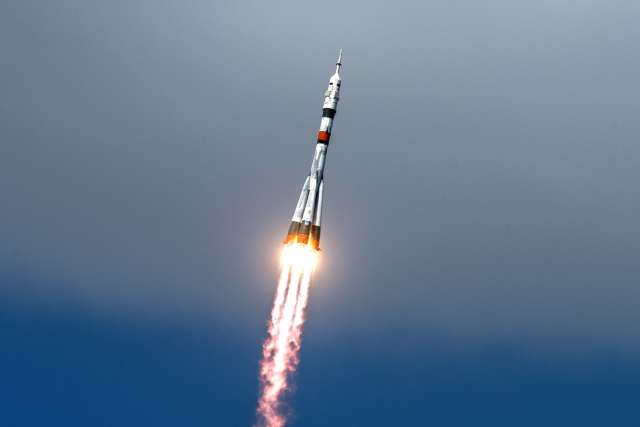We talk about Rostec Corporation products for astronauts and rocketsRostec State Corporation unites hundreds of enterprises that create unique high-tech products, including for the Russian space industry.
Among them are parachute systems, rocket engines, rocket shells and other developments.
About Rostec's five main products for the space industry — in the material of TASS.Simulators for astronauts
Cosmonauts' preparation for space flight begins on Earth. With the help of special simulators, they prepare for overloads, get acquainted with weightlessness, work out the docking of the ship with the station, as well as conducting experiments. Rostec was directly involved in the creation of some of them.
In normal mode, the descent of a manned spacecraft from near-Earth orbit occurs automatically, but in case of failure, a transition to manual control is provided. In this case, the task of landing the ship with minimal overloads at the design point should be solved by the commander. To practice these actions, a specialized TS-18 descent simulator was created, which allows simulating the overloads that astronauts experience when returning to Earth in the descent vehicle of the Soyuz MS manned spacecraft. It consists of a centrifuge, in the cabin of which the cosmonauts' remote control and the simulator control panel developed at KRET are installed. This equipment allows you to practice ship control, evaluate the actions of the crew in emergency situations, conduct scientific research and much more.
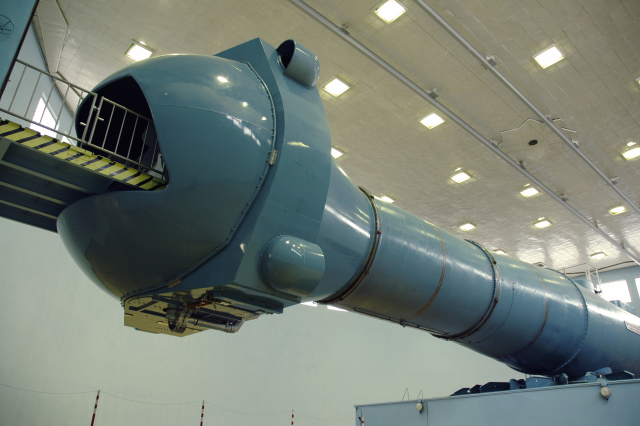 |
| The TS-18 descent simulator based on the CF-18 centrifuge at the Yuri Gagarin Cosmonaut Training Center in Zvezdny Gorodok. |
| Source: gctc.ru |
Also at the beginning of 2022, Shvabe Holding supplied the Yuri Gagarin Cosmonaut Training Center (CPC) with sight simulators for practicing the skills of docking manned spacecraft with orbital stations.
To prepare for work in zero gravity, astronauts conduct training in a special Il-76MDK laboratory aircraft. The aircraft is flying along a trajectory called the "Kepler parabola". As a result, the aircraft recreates weightlessness for about 30 seconds. The aircraft was developed in Soviet times by the Ilyushin Design Bureau (Ilyushin Aviation Complex, part of the United Aircraft Corporation). In total, three samples of the aircraft were created, which were transferred to the Gagarin CPC.
Soyuz parachutes
During the return of the descent vehicle of the Soyuz MS spacecraft, braking is an important task so that it does not hit the Ground hard during landing. At the entrance to dense layers, aeroballistic braking begins, and at an altitude of about 10 km, the parachute system is triggered. It is designed to ensure the safe landing of the crew on land and water surface during regular or urgent descent from orbit. Parachutes help to reduce the speed to about 9.5–10 m/s.
The only developer and manufacturer of such systems in Russia is the Parachute Engineering Research Institute. Its products were used in all domestic descent vehicles and ships from the Vostok to the Soyuz.
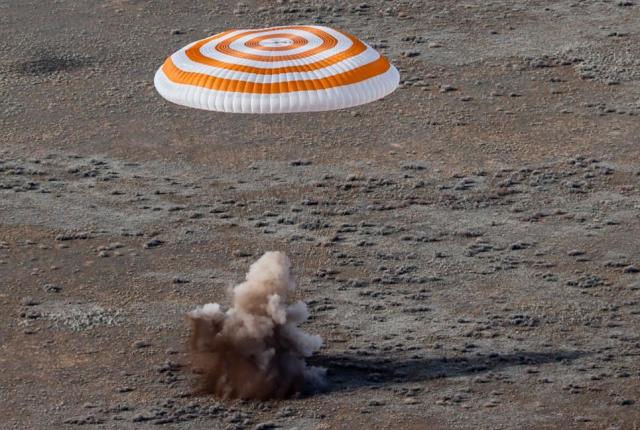 |
| Landing of the Soyuz MS-19 lander in Kazakhstan. |
| Source: Sergey Savostyanov/ TASS |
The parachute system for the Soyuz spacecraft, which is used today, consists of several domes. The exhaust parachute is brought out first to stabilize the ship, after that the brake parachute opens, which reduces the speed, then the main dome with an area of 1,000 sq. m. The area of the dome of the reserve parachute is 590 m.
As specified by TASS in Rostec, this reserve was used in the creation of a new generation parachute system for a promising Russian spacecraft. "It surpasses both Russian and foreign analogues in its characteristics. Its creation continues in accordance with the schedule, despite the sanctions pressure on our country," the state corporation noted.
Rocket engines
Engines of the RD-107/RD-108 family produced by UEC-Kuznetsov (part of the United Engine Corporation) are equipped with the first and second stages of all launch vehicles based on the R-7, including modern Soyuz-2.
Rostec told TASS that since 1958, more than 11 thousand serial rocket engines of this type have descended from the slipways of the enterprise, 1,976 launches have been made with their help. The RD-107A/RD-108A manufacturing technology has been worked out to the smallest detail, which gives them a unique statistical reliability of 99.9%.
Compared to the basic engines, modern RD-107A/RD-108A modifications have upgraded combustion chambers with increased energy characteristics. In accordance with the state strategy in the field of space exploration, UEC-Kuznetsov and NPO Energomash have created a version of the engine using environmentally friendly naphthyl fuel. On October 22, 2022, a successful launch of the Soyuz-2.1b carrier rocket with a Fregat upper stage and four spacecraft took place. The power plants on the new fuel worked normally.
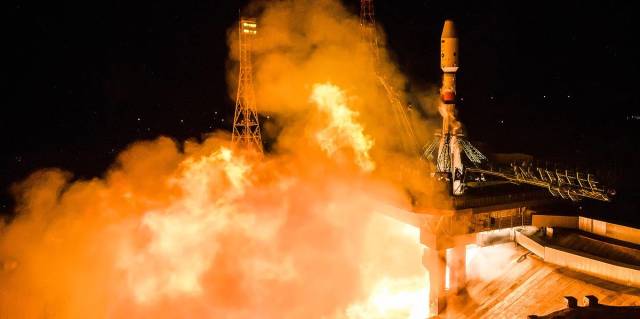 |
| Launch of the Soyuz-2.1b launch vehicle with the Berth module from the Baikonur Cosmodrome, November 24, 2021. |
| Source: © Sergey Savostyanov/TASS |
"The production plan for serial rocket engines has been approved until 2025, there are also long-term plans until 2030, which have been confirmed by Roscosmos. Several scenarios of changing the demand for domestic Soyuz-2 launch vehicles and, accordingly, for RD-107A/RD-108A engines are considered. If necessary, UEC-Kuznetsov is ready to increase their production," Rostec noted.
Composite shells for rockets
The shells protect the payload of the launch vehicle both during flight and on the ground. They must withstand extremely high and low temperatures, be strong and as light as possible, because in the space industry there is a struggle for every gram of weight. So, in November 2022, Alexander Tsygankov, Director General of the Research and Design Institute of Chemical Engineering (NIIHIMMASH), told TASS that the cost of delivering equipment and components necessary for the functioning of life support systems on the International Space Station (ISS) is from 1 million to 1.5 million rubles per kilogram of payload.
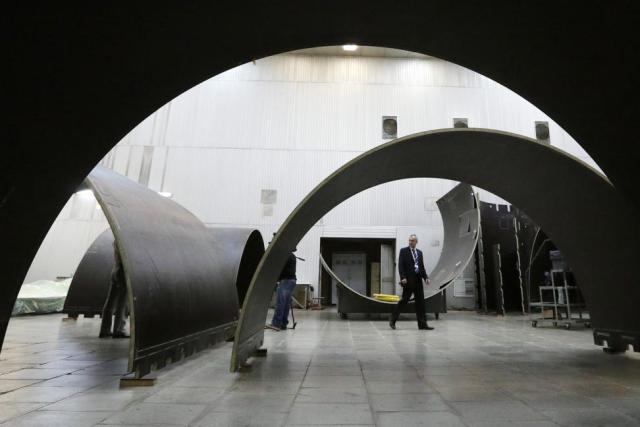 |
| Shells of the Proton-M launch vehicle in the workshop of the ONPP "Technology". |
| Source: © Artem Geodakyan/ TASS |
During the modernization of the most massive domestic carrier rocket "Proton", specialists of the ONPP "Technology" named after A.G. Romashin proposed to use composite materials in the shells of the head fairings. They consist of carbon fibers, honeycomb filler and film adhesives. Structures based on such materials are used in Proton-M and Angara rockets, they can withstand heavy loads and temperatures from -60 to +150 degrees Celsius.
The first composite shells were created at the enterprise in the 1990s, which reduced the mass of the Proton-M rocket by 1,500 kg. In subsequent years, the materials improved, the weight of the head fairing decreased by another 500 kg. "Today, the company is developing new advanced technologies that will improve the characteristics of materials for Russian advanced spacecraft and launch vehicles," Rostec noted.
As the state corporation stressed, the sanctions imposed against Russia did not affect the production of shells, since they are created from domestic materials. ONPP Technologiya has everything necessary to meet the needs of the domestic space industry in aggregates made of composite materials for new launch vehicles of the Angara family. Including — with a significant increase in the order for them," Rostec said.
Traveling wave lamps
One of the key elements of all communication satellites are traveling wave lamps, which amplify the power of the ultrahigh frequency wave thousands of times, which in turn increases the range of signal delivery. According to Rostec, NPP Almaz (part of the holding "Roselectronics") has produced and supplied customers with more than 1,500 such lamps for spacecraft, over the years of operation they have worked in space for more than 36 million hours.
"The company plans to expand the range of these products for spacecraft. The work of specialists is aimed at improving technical characteristics in terms of increasing efficiency, reducing the weight of equipment, as well as mastering new frequency ranges," Rostec explained.
Now the company is developing powerful traveling wave lamps for ground-based space communication systems, which should provide digital television broadcasting, high-speed Internet access, wired and mobile communication services throughout the country.
"In addition, Almaz specialists have developed the first Russian onboard traveling wave lamp with cooling due to infrared radiation into open space. This will reduce the thermal load on the spacecraft thermoregulation system by more than two times, which will increase the stability of the satellite," the state corporation added.
